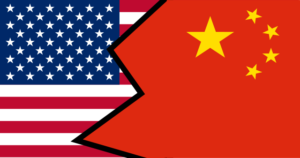
The world economy has been booming. Bloomberg says the world economy is approaching its best year since 2011.
On the other hand, there are always things that can go wrong. Here are a few possible events that could put the brakes on continued, unencumbered growth.
Korea
Though all-out war seems unlikely, other tension can exert serious negative pressure on world economy, mostly because South Korea makes up 2% of the entire world’s gross domestic product.
China
Rapidly rising debt and slow economic growth forced credit rating agencies to downgrade China as an investment opportunity, for the first time in 30 years. The country did announce economic reforms for the coming year, but analysts feel that if the reforms come too late, there could be serious de-stabilization in the Chinese economy.
US Protectionism
Donald Trump’s “America First” policies could backfire and cause our biggest trade partners, especially China to retaliate with some “protectionism” of their own. This could then lead to an unpredictable global business climate and unstable operating costs.
NAFTA
The uncertainty caused by President Trump’s threat to pull out of the North American Trade Agreement, which has been operational since 1994, could disrupt markets, reduce credit growth, and have many other dire consequences to our best trading partners, Mexico and Canada.
European Union
The EU had more economic growth in 2017 than the US, but that is not a guarantee that such a state of affairs will continue. The rise of the far-right in the East, Brexit, immigrants and more can all lead to destabilization and uncertainty in the Eurozone marketplace.
